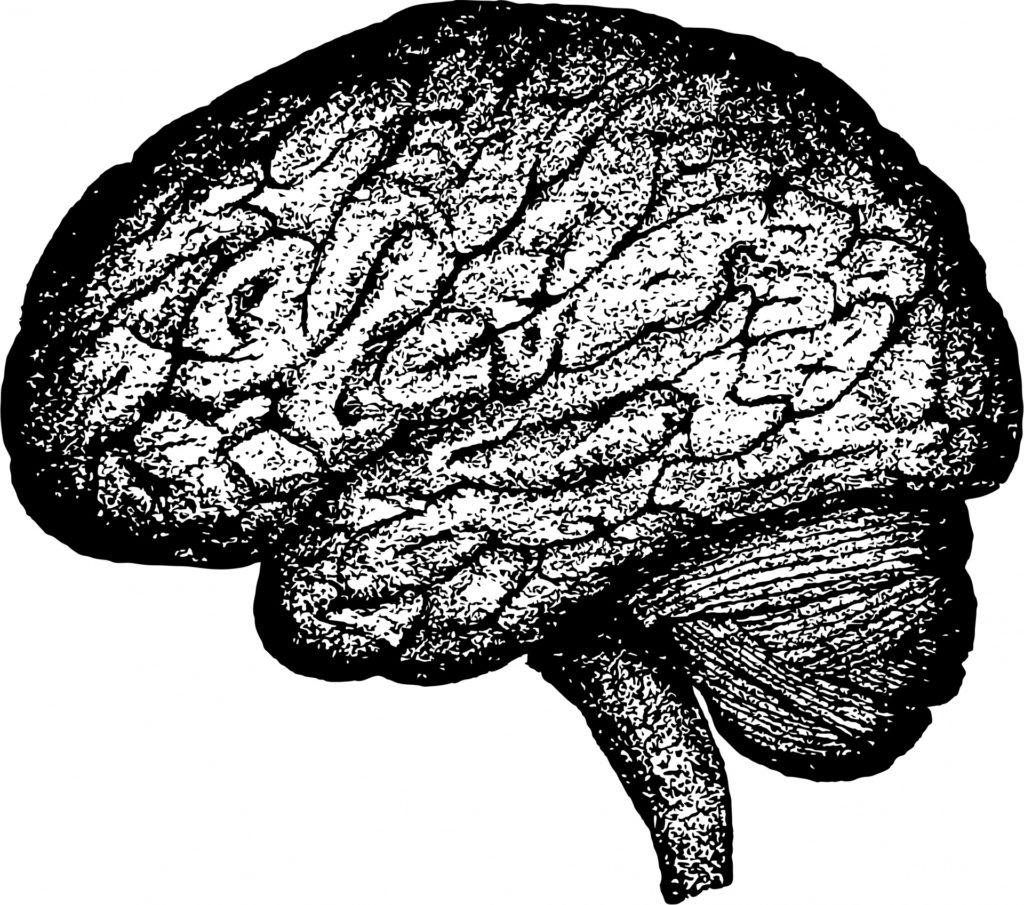New meta-analytic data revisit the link between altered brain activity and depression. These results, published in JAMA Psychiatry, highlight the stark inconsistencies across previous studies.
“…the fact that not only individual studies but also meta-analyses in UD [unipolar depression] have provided inconsistent findings is troubling. Reasons for this inconsistency may be methodological problems of previous analyses or the slightly varying scopes of them…”

Previous studies and meta-analyses that have sought to investigate the neural correlates of “depression” vary considerably. Dr. Muller and co-researchers point out that these inconsistent findings may be attributable to a number of methodological shortcomings.
For example, some studies inappropriately reported inferences unsupported by the methods employed. Many made invalid corrections that resulted in inflated positive findings, or simply failed to include an ample number of experiments, and therefore lacked statistical power.
Additionally, the investigation of neural correlates thought to underlie depression is fraught with inconsistencies regarding the kinds of experiments included. While some focused on cognitive and emotional experiments, others focused on either cognitive or emotional exclusively, or on other, more specific aspects.
The researchers of this study aimed to readdress the claims related to aberrant brain activity in the emotional and cognitive processing of individuals who fit the depression diagnosis. Additional objectives were to evaluate whether the lack of replication across meta-analyses is the result of methodological problems or to the varying foci between studies.
“The present work is not a reproduction of previous meta-analyses (i.e., including the same experiments as well as the same analytic procedures) but rather a conceptual replication of them.”
They explain this process and clarify that if the problem simply lies in the different kinds of experiments featured across studies, then the findings should be replicable. Otherwise, inconsistent findings would be demonstrative of methodological problems.
In an effort to provide best-practice analyses, the researchers applied a number of inclusion and exclusion criteria in their review of neuroimaging experiments. Across the studies published between January of 1997 and October of 2015, they analyzed studies featuring adult samples of participants diagnosed with unipolar depression (according to the latest DSM and ICD classifications) compared to “healthy” control samples. They attempted to exclude studies that featured participants with comorbid diagnoses or participants in remission from depression.
Furthermore, criteria were applied to the experimental design and other technical aspects. Only studies using an emotional or cognitive task that observed group differences or group interactions with the experimental condition were included. Studies were excluded if they did not report results of whole-brain analysis in favor of partial-brain coverage, a method that compromises research rigor and accuracy.
After performing 16 different meta-analyses on 57 studies, the results point to widespread heterogeneity and failure to confirm previous effects. Ninety-nine individual neuroimaging experiments were featured with 50 reporting increased brain activity linked to depression, and 49 reporting decreased brain activity. Analyses across experiments featured, as well as those investigating convergence in processes, yielded no significant findings.
“Our results may reflect that the current imaging literature on UD [unipolar depression] is so heterogeneous that no generalized effects may be found.”
This may be a result of employing different tasks, stimuli, methodologies, and participant characteristics, the authors explain.
“Thus, concrete conclusions about the neurobiology of aberrant emotional and cognitive processing in UD [unipolar depression] can only be drawn when enough experiments are similar in procedure and analyzed sample to calculate more specific meta-analyses.”
Yet, the issues unveiled in this study may be indicative of ubiquitous problems.
“Our results not only indicate inconsistencies across individual experiments investigating aberrant brain activity in UD, but in addition point to problems related to replication of neuroimaging meta-analyses.”
These methodological issues are not confined to experiments related to depression or neuroimaging specifically, write the researchers. They are hopeful, however, about the future of neuroimaging as reporting and analysis standards improve.
****
Müller, V. I., Cieslik, E. C., Serbanescu, I., Laird, A. R., Fox, P. T., & Eickhoff, S. B. (2017). Altered brain activity in unipolar depression revisited: Meta-analyses of neuroimaging studies. JAMA psychiatry, 74(1), 47-55. (LINK)















Really?
It looks like neuro-imaging might be both expensive AND useless in the case of “mental illness”. I wonder whether any of the people using imaging actually considered asking their patients why they were feeling the way they were feeling and/or what THEY thought might make them feel better ….but I guess that might be too radical for these “highly skilled medical specialists” given the causes are likely to be hidden in plain sight (food, shelter, jobs, respect, freedom from abuse etc), and that just doesn’t happen to be where they want to look and/or what they want to see!
Report comment
” … but I guess that might be too radical for these ‘highly skilled medical specialists’ given the causes are likely to be hidden in plain sight (food, shelter, jobs, respect, freedom from abuse etc), and that just doesn’t happen to be where they want to look and/or what they want to see!” No, they want to blame individual’s brain chemistry, rather than their scientifically invalid DSM based system.
https://www.nimh.nih.gov/about/directors/thomas-insel/blog/2013/transforming-diagnosis.shtml
I will mention, however, an ethical pastor confessed to me that “the dirty little secret of the two original educated professions” is that the mainstream medical industry and the religions made a faustian deal with the scientifically invalid psychological and psychiatric industries long, long ago. In exchange for the mainstream medical doctors, and the religion owned hospitals within which they worked, affording those industries undue credibility, the psychological and psychiatric industries agreed to cover up the “zipper troubles” of the religions and the easily recognized iatrogenesis of the mainstream medical doctors.
And today the psychological and psychiatric industries own medical literature does now show that the number one actual function of today’s “mental health industry” is profiteering off of turning child abuse victims into the “mentally ill” with the psychiatric drugs. Given that today, “the prevalence of childhood trauma exposure within borderline personality disorder patients has been evidenced to be as high as 92% (Yen et al., 2002). Within individuals diagnosed with psychotic or affective disorders, it reaches 82% (Larsson et al., 2012).”
And we all now know over a million children, and God knows how many adults, have had the adverse effects of the antidepressants and ADHD drugs misdiagnosed, even according to the DSM-IV-TR, as “bipolar.”
http://www.alternet.org/story/146659/are_prozac_and_other_psychiatric_drugs_causing_the_astonishing_rise_of_mental_illness_in_america
And the current DSM treatment recommendations for “borderline,” “bipolar,” and the other “psychotic or affective disorders,” which all call for combining the antidepressants and/or antipsychotics (aka neuroleptics), can create what appears to the DSM deluded to be the negative symptoms of “schizophrenia,” via what is actually neuroleptic induced deficit syndrome. And over drugging people with these drug classes can also create what appears to the DSM deluded to be the positive symptoms of “schizophrenia,” via what is actually anticholinergic toxidrome.
https://en.wikipedia.org/wiki/Neuroleptic-Induced_Deficit_Syndrome
https://en.wikipedia.org/wiki/Toxidrome
But since neither of these medically known psychiatric drug induced illnesses are listed in the scientifically invalid DSM, they are always misdiagnosed as one of the scientifically invalid DSM disorders.
Today’s “mental health” industry is one gigantic, multi billion dollar, iatrogenic illness creating, primarily child abuse covering up industry, and they don’t want the rest of the world to know this, since this is actually illegal.
And since the actual truth, “might be too radical for these ‘highly skilled medical specialists’ given the causes are likely to be hidden in plain sight.” The truth of the psychological and psychiatric industries’ faustian deal with the mainstream medical industry and pedophile profiteering mainstream religions is now coming to light.
The scientifically invalid psychology and psychiatric industries do have malpractice insurance for a good reason, and I hope they choose to repent and confess to their, known or ignorance inspired, massive in scope harm of their patients, and they make proper amends. And let’s pray for justice for all.
Report comment
Of course it’s useless, because the origins of their “unipolar depressions” are likely multiple. Unipolar depression is just a descriptive term, like “fever,” which can have any number of causes and no universal treatment.
Report comment
They overlook the obvious reason for the inconsistent findings: THERE IS NO CONSISTENT FINDING TO BE MADE! IN other words, there is no correlation between depression and a particular “aberrant” brain function. This is the clear SCIENTIFIC conclusion when multiple experiments lead to no result. It is only the lack of a scientific intent that allows these experiments to continue to be funded. Any real scientist wouldn’t be blathering on about methodology and statistical issues. If 50% of experiments point to increased activity and 50% point to decreased activity, you have your answer – there is no effect to be measured. Why is that not the conclusion of the study???
— Steve
Report comment
The brain “working” during a MRI. https://www.wired.com/2004/04/brain-scans-arouse-researchers/
Report comment
Is this a reproduced article word for word? I’m wondering. The article states that “experiments” were done and I’m wondering because human experimentation isn’t done anymore. On brains? Huh? Can you write this in plain English? This is MIA, not a specialty journal, you know……
Report comment